Discover 11 hidden attractions, cool sights, and unusual things to do in Selma (United States). Don't miss out on these must-see attractions: Joseph T. Smitherman Historic Building, Sturdivant Hall, and Edmund Pettus Bridge. Also, be sure to include National Voting Rights Museum in your itinerary.
Below, you can find the list of the most amazing places you should visit in Selma (Alabama).
Table of Contents
Joseph T. Smitherman Historic Building

Museum in Selma, Alabama. The Joseph T. Smitherman Historic Building, also known by a variety of other names throughout its history, is a historic Greek Revival building in Selma, Alabama. Completed in 1847, it has served many functions in the more than 160 years of its existence. The building was added to the National Register of Historic Places on June 20, 1975, due to its architectural and historical significance. It currently houses the Vaughan-Smitherman Museum, a museum depicting Selma's history.[1]
Address: 109 Union St, 36701-5832 Selma
Sturdivant Hall
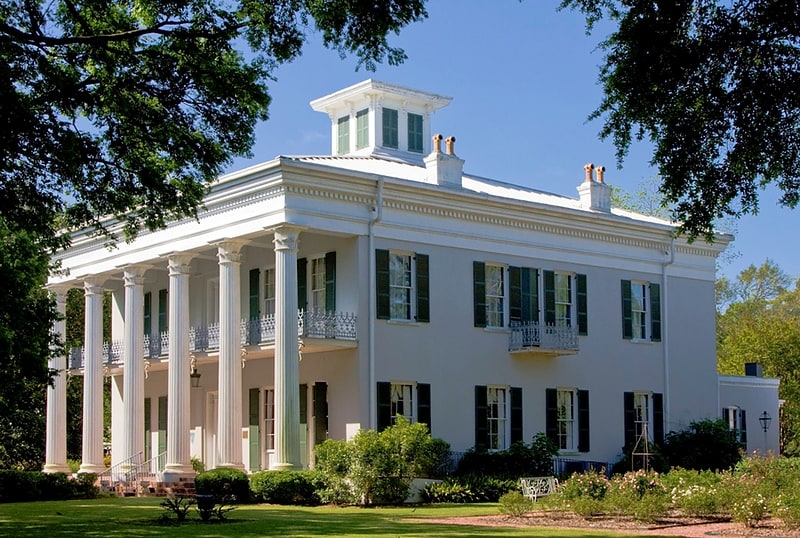
Mansion in Selma, Alabama. Sturdivant Hall, also known as the Watts-Parkman-Gillman Home, is a historic Greek Revival mansion and house museum in Selma, Alabama, United States. Completed in 1856, it was designed by Thomas Helm Lee for Colonel Edward T. Watts. It was added to the National Register of Historic Places on January 18, 1973, due to its architectural significance. Edward Vason Jones, known for his architectural work on the interiors at the White House during the 1960s and 70s, called it one of the finest Greek Revival antebellum mansions in the Southeast.[2]
Address: 713 Mabry St, 36701-5521 Selma
Edmund Pettus Bridge
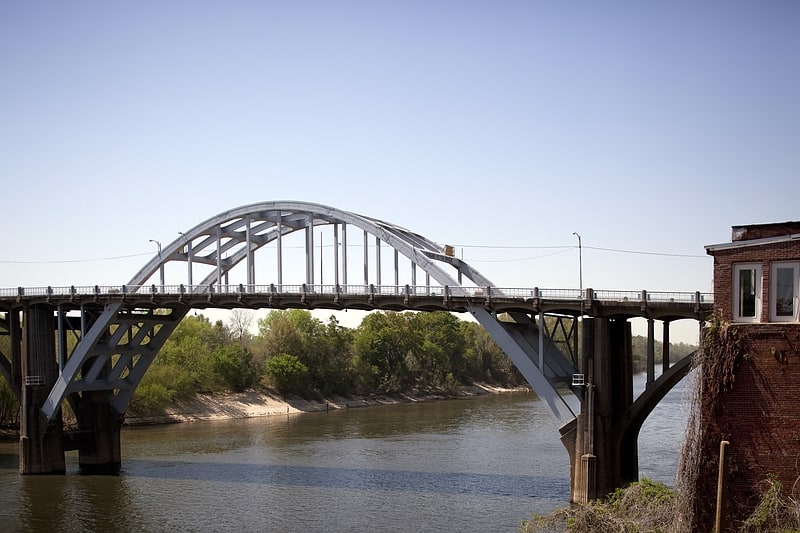
Famous landmark in civil rights history. The Edmund Pettus Bridge carries U.S. Route 80 Business across the Alabama River in Selma, Alabama. Built in 1940, it is named after Edmund Pettus, a former Confederate brigadier general, U.S. senator, and state-level leader of the Alabama Ku Klux Klan. The bridge is a steel through arch bridge with a central span of 250 feet. Nine large concrete arches support the bridge and roadway on the east side.
The Edmund Pettus Bridge was the site of the conflict of Bloody Sunday on March 7, 1965, when police attacked Civil Rights Movement demonstrators with horses, billy clubs, and tear gas as they were attempting to march to the state capital, Montgomery. The marchers crossed the bridge again on March 21 and walked to the Capitol building.
The bridge was declared a National Historic Landmark on February 27, 2013.[3]
Address: US Highway 80, Selma
National Voting Rights Museum
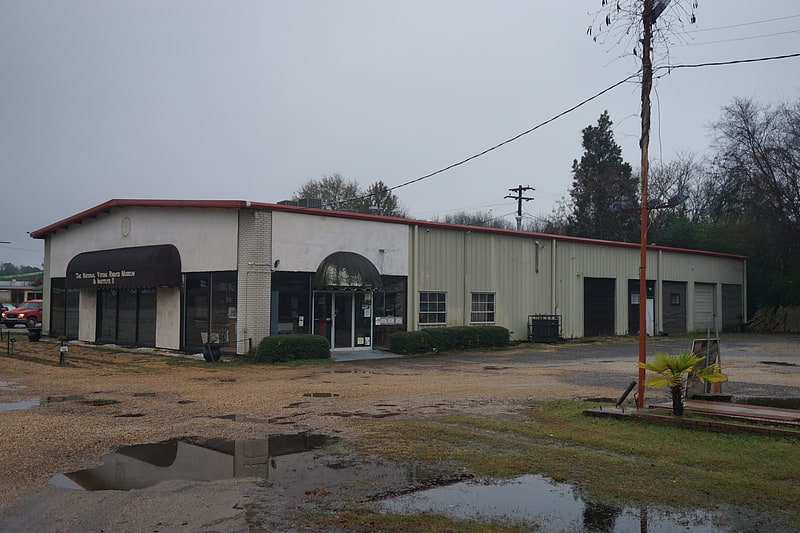
Museum in the Dallas County, Alabama. The National Voting Rights Museum and Institute, established in 1991 and opened in 1993, is an American museum in Selma, Alabama, which honors, chronicles, collects, archives, and displays the artifacts and testimony of the activists who participated in the events leading up to and including the 1965 Selma to Montgomery marches, and passage of the 1965 Voting Rights Act, as well as those who worked for the African-American Voting Rights and Women's Suffrage movements. As the museum describes in its mission statement, it recognizes other people, events, and actions which furthered America's Right to Vote since "the Founding Fathers first planted the seeds of democracy in 1776." The museum was founded by Faya Ora Rose Touré and Marie Foster.
It is located near the Edmund Pettus Bridge. On this bridge on March 7, 1965, voting rights marchers who left the city for a planned walk to Montgomery were beaten and clubbed by Dallas County posse and Alabama State Troopers, in what became known as "Bloody Sunday". They had passed into the county on a planned walk of 54 miles to Montgomery, Alabama's state capital. This treatment was nationally televised and covered by major media, arousing national outrage. After gaining federal protection from President Lyndon B. Johnson and a federal court order protecting their right to march, thousands of people left Selma on March 21, reaching Montgomery several days later. By then, they had been joined by thousands more, black and white, and 25,000 marchers entered the state capital to press for protection of constitutional voting rights. Later that summer the Voting Rights Act of 1965, introduced by the Johnson administration, was passed by Congress and signed by the president.[4]
Address: 6 US Highway 80 E, 36701-7307 Selma
Old Live Oak Cemetery
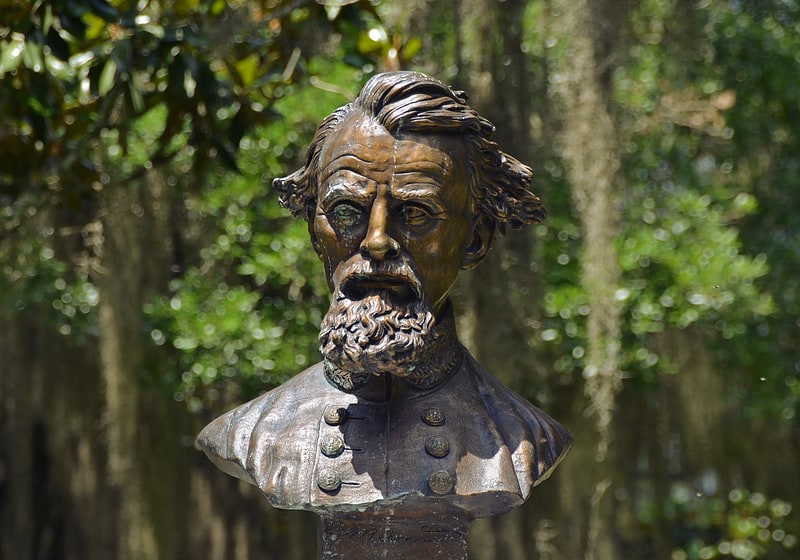
Cemetery in Selma, Alabama. Old Live Oak Cemetery is an historic cemetery in Selma, Alabama that was founded in 1829 and expanded in 1877. The newer portion is sometimes called New Live Oak Cemetery and the cemetery is collectively known as Live Oak Cemetery. It contains burials of Confederate States of America leaders, as well Benjamin Sterling Turner, an African-American who served as U.S. Representative for Alabama during the Reconstruction era. The cemetery is at 110 Dallas Avenue approximately 0.7 miles west of downtown Selma.[5]
Address: 110 W Dallas Ave, 36701-6559 Selma
St. Paul's Episcopal Church
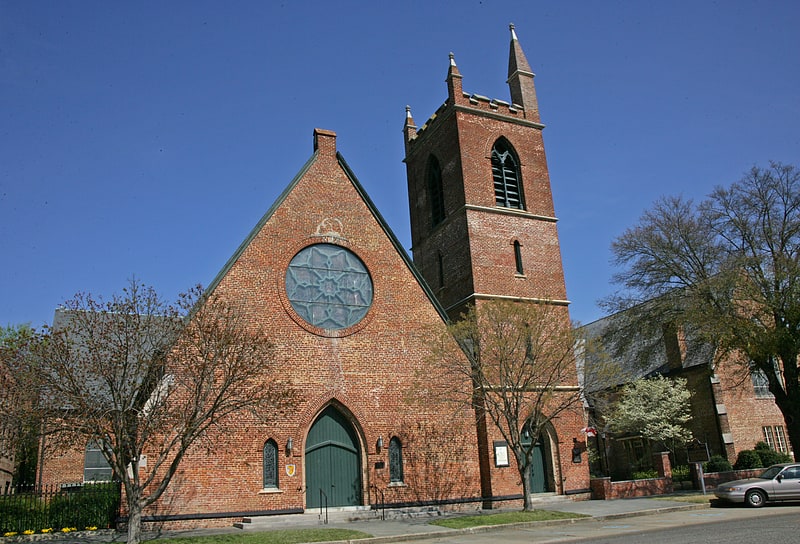
Building in Selma, Alabama. St. Paul's Episcopal Church is an historic red brick Gothic Revival church located at 210 Lauderdale Street in Selma, Dallas County, Alabama, United States. The parish was established in 1838 and its original sanctuary building was burned on April 2, 1865 during the Battle of Selma, with credit for that act going to Union General James H. Wilson. The current building was designed by the famous New York City architectural firm of Richard Upjohn and was completed in 1875.
The interior features several Tiffany stained glass windows designed by parishioner and Selma native, Clara Weaver Parrish, who was a noted artist who worked for Tiffany Studios in New York.
St. Paul's Episcopal Church was added to the National Register of Historic Places on March 25, 1975.
St. Paul's Episcopal Church is a parish in the Episcopal Diocese of Alabama. The Rev. Jack Alvey is currently serving as the twenty second rector.[6]
Address: 210 Lauderdale St, 36701 Selma
First Baptist Church
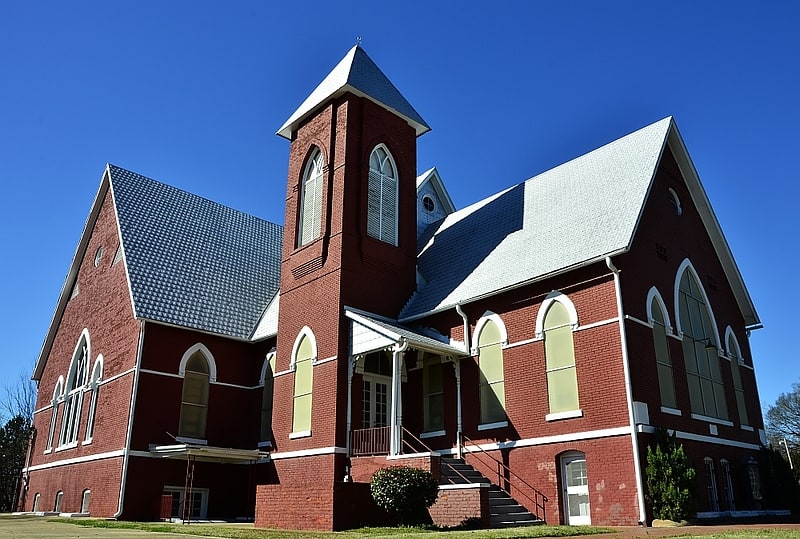
Baptist church in Selma, Alabama. First Baptist Church is a historic church at 709 Martin Luther King, Jr. Street in Selma, Alabama. A historically African American Baptist church, it was built in the Gothic Revival style in 1894 and known for its association with the Civil Rights Movement. It was added to the National Register of Historic Places in 1979.
From the National Register of Historic Places Inventory — Nomination Form:
In 1963 under the leadership of Reverend M. C. Cleveland, the church became the first in the city to open its doors for activities and meetings of the Dallas County Voters League. During the next two years, the church was a focal point of the mass meeting and non-violent teaching sessions sponsored by the Student Nonviolent Coordinating Committee, and in late 1964, meetings were held in the church to plan the mass rallies and demonstrations of early 1965 which culminated in the Selma-to-Montgomery march. During the early months of 1965, Martin Luther King, Jr. Ralph Abernathy, and other leaders of the Southern Christian Leadership Conference, headquartered in Brown's Chapel half a block away, spoke nightly to the youth gathered at First Baptist Church. After the march, the church continued to headquarter the Student Nonviolent Coordinating Committee and continued to serve as a distribution center for food and clothing for those persons who suffered the loss of jobs.[7]
Address: 709 Martin Luther King St, 36703 Selma
Brown Chapel A.M.E. Church
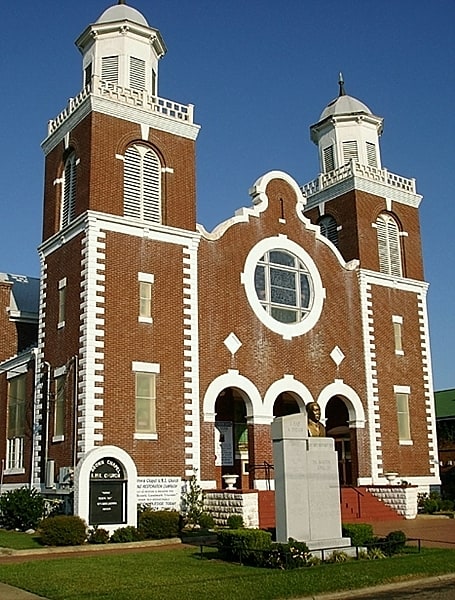
Methodist church in Selma, Alabama. Brown Chapel A.M.E. Church is a church at 410 Martin Luther King Jr. Boulevard in Selma, Alabama, United States. This church was a starting point for the Selma to Montgomery marches in 1965 and, as the meeting place and offices of the Southern Christian Leadership Conference during the Selma Movement, played a major role in the events that led to the adoption of the Voting Rights Act of 1965. The nation's reaction to Selma's "Bloody Sunday" march is widely credited with making the passage of the Voting Rights Act politically viable in the United States Congress.
It was added to the Alabama Register of Landmarks and Heritage on June 16, 1976 and later declared a National Historic Landmark on February 4, 1982.[8]
Address: 410 Martin Luther King St, 36703-3141 Selma
Old Depot Museum
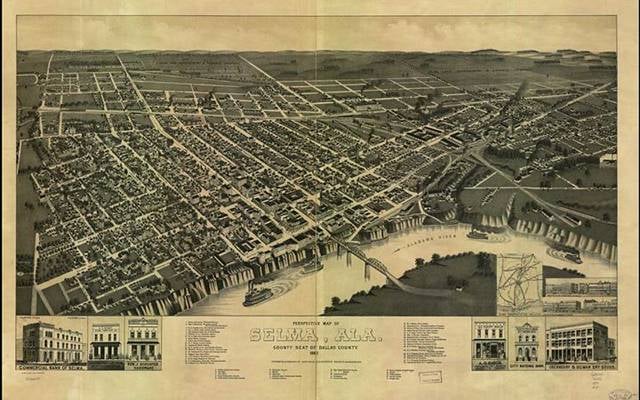
Museum, History museum
Address: 4 Martin Luther King St, 36703-3109 Selma
Ancient Africa Enslavement & Civil War Museum

Museum
Address: 1410 Water Ave, Selma
Old Town Historic District
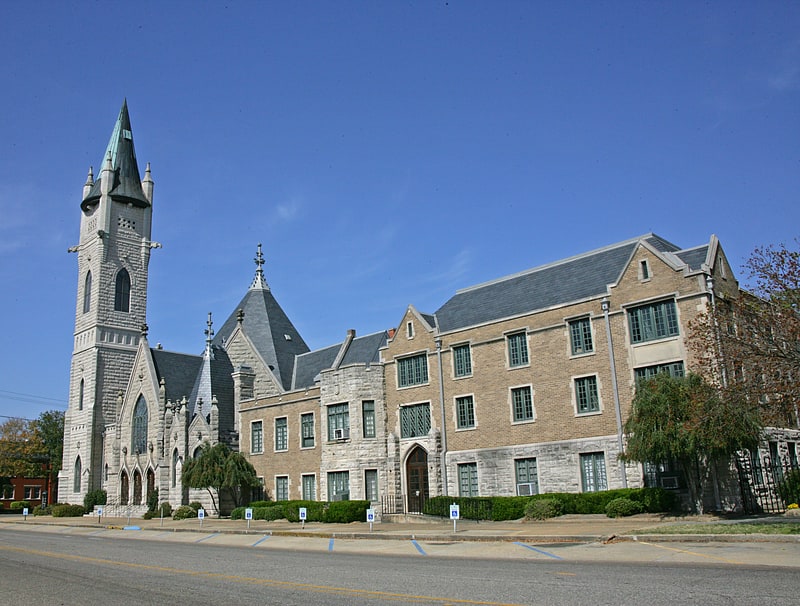
Historical place in Selma, Alabama. The Old Town Historic District is a 323-acre historic district in Selma, Dallas County, Alabama. It is bounded by U.S. Route 80, Broad and Franklin streets, and Dallas and Selma avenues. The boundaries were increased on December 15, 2003. The district includes examples of the Federal, Greek Revival, Italianate, Gothic Revival, Victorian, Shotgun, Queen Anne, Romanesque Revival, Renaissance Revival, and Classical Revival. It contains 629 properties, with 513 contributing and 116 noncontributing to the district. It was added to the National Register of Historic Places on May 3, 1978.
Dallas Academy was a private school in Selma, Alabama (Dallas County, Alabama). The school building was constructed ca. 1889 and it is a contributing property to the Old Town Historic District.[9]